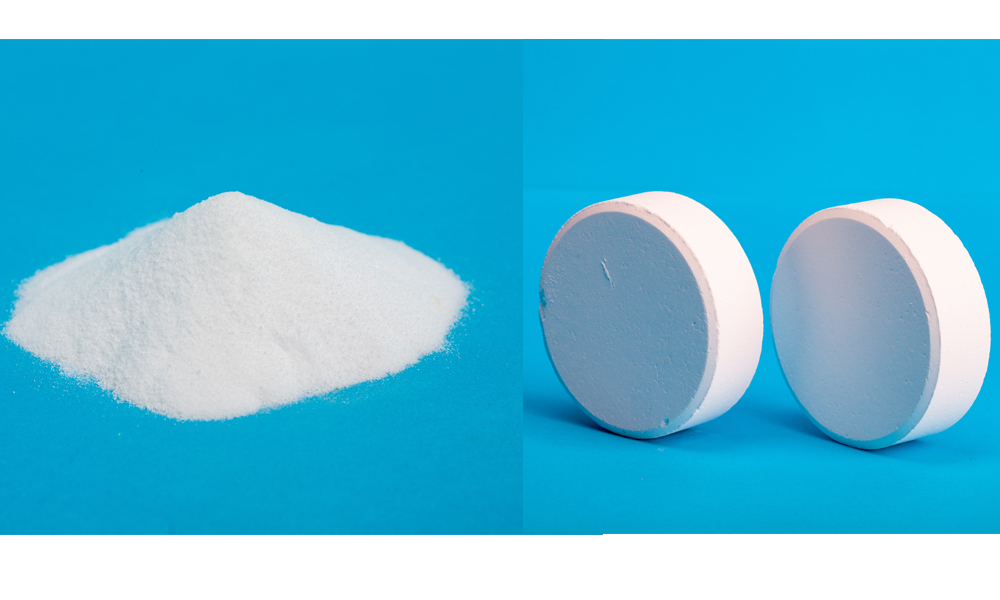The selection of Mold Release Agent is an important step in the production of trichloroisocyanuric acid (TCCA) tablets, which directly affects the quality of tablet formation, production efficiency, and mold maintenance cost.
1、 Role of mold release agent
Mold release agents are mainly used to form a thin film between the mold and TCCA tablet, to facilitate the smooth demolding of the product from the mold, while reducing mold wear and pollution.
2、 Selection principle of mold release agent
1). Material compatibility:
Choose a mold release agent that is compatible with TCCA tablet to avoid chemical reactions or contamination of the product.
2). Demoulding effect:
Ensure that the mold release agent has a good demolding effect, so that TCCA tablets can be completely and smoothly released from the mold.
3. Types of mold release agent
1). Boric acid
Appearance and solubility:
Boric acid is a white, easily flowing crystal or powder that is soluble in various solvents such as water, alcohol, and glycerol. This good water solubility makes boric acid a very common component in the preparation of mold release agents.
Functionality:
Anti corrosion and antibacterial properties: Boric acid has strong antibacterial and anti-corrosion properties, which can reduce the impact of corrosion factors on the mold and prolong the active life of mold.
Thickening: Boric acid can thicken the release agent without affecting its effectiveness, making it easier for the release agent to adhere to the surface of the mold and improving the release efficiency.
Adjusting pH value: In the disinfectant industry, boric acid in tablet is also used to adjust pH value.
High quality boric acid usually has the characteristics of small particle size, easy dispersion, easy dissolution, and stirring, and has strict requirements for dryness, fineness, and caking.
2). Magnesium stearate
Appearance and solubility:
Magnesium stearate has a white powder appearance and a smooth feeling. It is insoluble in water and ethanol, but soluble in hot water and ethanol. When exposed to acid, it decomposes into stearic acid and corresponding magnesium salts.
Functionality:
During the tablet pressing process, magnesium stearate is used as a release agent, with very small dosage. It is also used as an anti-caking agent, an emulsifier and/ora stabilizer.
Due to its insoluble nature in water, magnesium stearate may produce floating sticky substance in certain applications, which maybe have bag impacts on applications.
4. Application in mold release agents
Boric acid: As one of the components of the release agent, boric acid significantly improves the performance and active life of the release agent. Especially in mold release agents that require high cleanliness, high transparency, the advantage of boric acid is more obvious.
Magnesium stearate: Although magnesium stearate also has excellent lubrication and demolding effects, it may be limited in certain application field due to its insoluble nature in water. Especially in situations where high requirements are placed on product cleanliness and transparency, magnesium stearate may not be the best choice.
As CPO member of NSPF,our engineer maintain the pool with good condition each day,we have very professional background for pool and waste water treatment for over 29 years. Contact us for details application and trouble-shot solution in cost-performance best way.
Post time: Jul-11-2024

